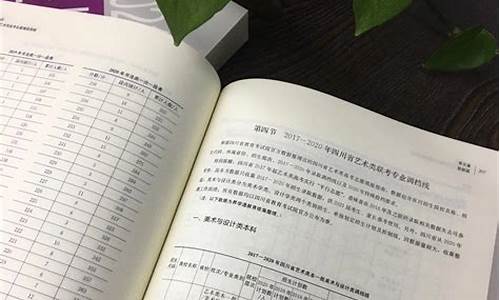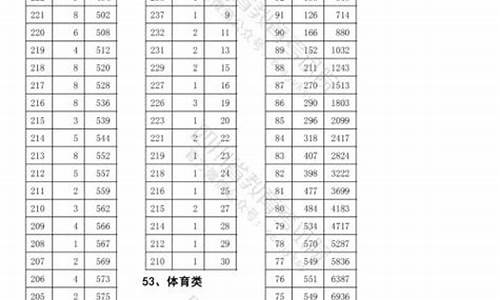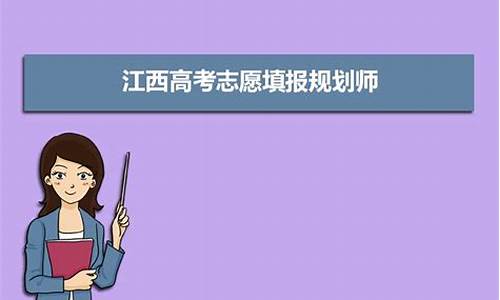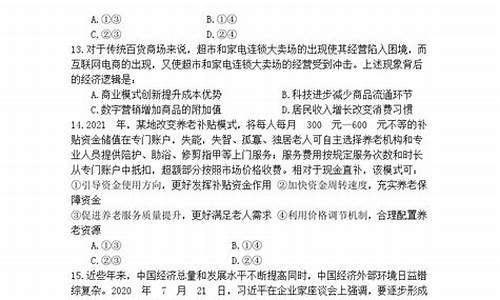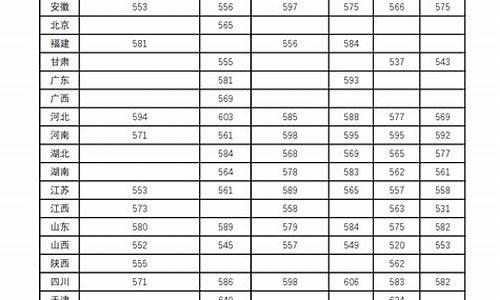您现在的位置是: 首页 > 教育比较 教育比较
高考阅读题2023_高考大阅读题
tamoadmin 2024-07-01 人已围观
简介1.高考语文阅读理解解题技巧2.高考英语阅读训练题附答案3.高考英语阅读理解解题技巧全攻略4.高考小说阅读常见题型及解题技巧5.高考英语阅读理解易错题分析6.各地历年高考文言文阅读7.福建高考英语阅读训练题及答案解析?8.高考英语阅读理解中的数学题对于马裤先生性格特点的概括。这道题对于考生的概括能力是一个考验。如果对于作者幽默讽刺的风格把握不好,有的同学可能会严重偏离。一声声对茶房的呼叫,还有他那
1.高考语文阅读理解解题技巧
2.高考英语阅读训练题附答案
3.高考英语阅读理解解题技巧全攻略
4.高考小说阅读常见题型及解题技巧
5.高考英语阅读理解易错题分析
6.各地历年高考文言文阅读
7.福建高考英语阅读训练题及答案解析?
8.高考英语阅读理解中的数学题
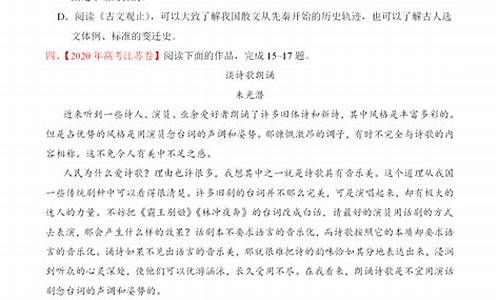
对于马裤先生性格特点的概括。这道题对于考生的概括能力是一个考验。如果对于作者幽默讽刺的风格把握不好,有的同学可能会严重偏离。一声声对茶房的呼叫,还有他那神态,可以看出他的目中无人,颐指气使;对于多打一张行李票的后悔、对于挂钩的霸占、对于手巾把的妙用等,可以看出他的爱占小便宜、斤斤计较、自私自利;击打靴子上的土、那照顾车箱的一口痰,可见此人不顾他人感受,不讲公德,不讲卫生等。
高考语文阅读理解解题技巧
30. What is the argument over Uber according to the passage?
A. Whether it guarantees customers' safety.
B. Whether it provides reliable services.
C. Whether it lowers customers' expenses.
D. Whether it can compete with standard taxis.
31. What will be talked about in the following paragraphs?
A. Existing regulations and laws.
B. Necessary improvements of current laws.
C. Further development of Airbnb and Uber.
D. More downsides of Airbnb and Uber.
D
The old shopkeeper led me through to the back of the shop. The room was filled with boxes and dusty photographs of people holding packages in their hands.
Mr. Hopkins said, ?We have a very wide choice of items for sale. Whenever I serve a new customer, I take their picture.? Mr. Hopkins pointed to an ancient camera on a table.
I began to appreciate the lovely items on sale. I spent a very pleasant hour being shown the commodities in the shop. Finally, I bought an antique jewelry box, a pair of riding boots and a sewing machine.
I was very excited that I had found such a good little shop. ?I will tell all my friends about your lovely place,? I told the shopkeeper. ?Please do not do that, sir?, said Mr. Hopkins. ?This is a special place for special people. You must keep this shop a secret.? Then he took my photograph, and handed me the picture straight away.
?That was quick!? I exclaimed. In the picture I looked proud and excited holding the presents I had bought there.
On Christmas Day, my friends and relatives were delighted with the presents I had bought for them. For weeks, my brother begged me to take him to the wonderful little shop. I finally agreed .
We walked along Oxford Street, passed the department store and found nothing. In its place was an empty space being used as a car park. I checked the area again. There was the music shop, and there was the department store. In between should have been Hopkins and Son, but it wasn?t there.
Just then an old policeman came . ?Are you looking for something, sir? he asked. ?I am looking for a little shop called Hopkins and Son. ?
?Oh yes, there was a shop here once called Hopkins and Son. But it was knocked down over 30 years ago.?
I looked again at the place , and then I reached into my pocket and took out the photograph that Mr. Hopkins had taken of me holding my presents in the little shop.
?How strange? I exclaimed.
32. What did the author think of Hopkins and Son?
A. Big and modern .
B. Old and outdated.
C. Little and dusty.
D. Lovely and wonderful.
33. We can infer from Paragraph 4 that Mr. Hopkins ________.
A. was ashamed of his little shop.
B. didn?t like his shop to be advertised.
C. was one of the author?s special friends.
D. handed the author his picture immediately.
34. What does the underlined word揷ommoditiesn? refer to?
A. The goods in the shop
B. the author?s gifts
C. Photographs taken by Mr. Hopkins
D. Packages held by other customers
35. What can we learn about the shop?
A. It was closed by the police.
B. It was well-known in that area.
C. It was knocked down a few weeks ago.
D. It was between a music shop and a department store.
第二节 (共5小题;每小题2分,满分10分)
根据短文内容,从短文后的选项中选出能填入空白的最佳选项。选项中有两项为多于选项。
Most people believe they don't have much imagination. They are wrong. Everyone
has imagination, 36 Here are three techniques to help you regain your imagination
and creativity from when you were a kid.
Making connections.
This technique involves taking unrelated ideas and trying to find links between
them. First, think about the problem you have to solve or the job you need to do. 37 Think of as many ideas/words associated with candles: light, fire, matches, wax,night, silence, etcas you can and write them down. The next stage is to relate the ideas to the job you have to do.
No limits!
38 You have as much time/space/money, etc. as you want. Think about your goal and the new possibilities. If your goal is to learn to ski, for example, you can now practise skiing every day of your life (because you have the time and the money) . Now adapt this to reality. Maybe you can practise skiing every day in December, or every Monday in January.
39
Look at the situation from a different point of view. Fiction writers often imagine they are the characters in their books. They ask questions: What does this character want? Why can't she get it? What changes must she make to get what she wants? 40 The best fishermen think like fish!
A. Being someone else!
B. Asking questions!
C. Imagine that normal limitations don't exist.
D. Then find an image, word, idea or object, for example, a candle.
E. If your goal involves other people, put yourself in their positions.
F. but most of us, once we become adults, forget how to make use of it.
G. and we are on the way to achieving it whether the way is smooth or tough.
参考答案:
21-23.DAC, 24-27.CAAC, 28-31.CDAB, 32-35.DBAD, 36-40.FDCAE。
高考英语阅读训练题附答案
答语文阅读题的时候适当的运用答题套路可以得到更多的分。接下来是我为大家整理的高三语文阅读答题技巧。
⑴设疑法(悬念法)好处(思维方向):
①引起读者的思考,吸引读者。
②引出下文的情节。
③突出人物形象。
④揭示小说的主题。
⑵写景法好处(思维方向):
①交代故事发生的时间、地点。
②暗示社会环境,揭示社会本质特征。
③揭示人物心境,表现人物性格。
④渲染气氛。
⑤推动情节的发展,为刻画人物作铺垫,打基础。
(3)其它还有:开篇点题,统领全文;引出下文,或为下文作铺垫;渲染气氛,奠定基调。这些仅是术语,答题时需根据文章内容、结构、效果等方面作答。
高考英语阅读理解解题技巧全攻略
My elder brother Steve, in the absence of my father who died when I was six, gave me important lessons in values that helped me grow into an adult. For instance, Steve taught me to face the results of my behavior. Once when I returned in tears from a Saturday baseball game, it was Steve who took the time to ask me what happened. When I explained that my baseball had soared through Mrs. Holt’s basement window, breaking the glass with a crash, Steve encouraged me to confess to her. After all, I should have been playing in the park down Fifth Street and not in the path between buildings. Although my knees knocked as I explained to Mrs. Holt, I offered to pay for the window from my pocket money if she would return my ball. I also learned from Steve that personal property is a sacred thing. After I found a shiny silver pen in my fifth-grade classroom, I wanted to keep it, but Steve explained that it might be important to someone else in spite of the fact that it had little value. He reminded me of how much I’d hate to lose to someone else the small dog my father carved from a piece of cheap wood. I returned the pen to my teacher, Mrs. Davids, and still remembered the smell of her perfume as she patted me on my shoulder. Yet of all the instructions Steve gave me, his respect for life is the most vivid in my mind. When I was twelve I killed and old brown sparrow in the yard with a BB gun. Excited with my accuracy, I screamed to Steve to come from the house to take a look. I shall never forget the way he stood for a long moment and stared at the bird on the ground. Then in a dead, quiet voice, he asked, “Did it hurt you first, Mark?” I didn’t know what to answer. He continued with his eyes firm, “The only time you should even think of hurting a living thing is if it hurts you first. And then you think a long, long time. “ I really felt terrible then, but that moment stands out as the most important lesson my brother taught me.
1. What is the main subject of the passage?
A. The relationship between mark and Steve.
B. The important lesson Mark learned in school
C. Steve’s important role in mark’s growing process.
D. Mark and Steve’s respect for living things.
2. It can be inferred from the passage that when mark confessed to Mrs. Holt, __________.
A. he felt surprised B. he was light-hearted
C. he felt frightened D. he knelt before her
3. In the story about the pen, which of the following lessons did Steve teach his brother?
A. Respect for personal property.
B. Respect for life.
C. Sympathy for people with problems.
D. The value of honesty.
4. According to the writer, which was the most important lesson Steve taught his young brother?
A. Respect for living things.
B. Responsibility for one’s actions.
C. The value of the honesty.
D. Care for the property of others.
5. Which of the follow is true according to the passage?
A. Mark was still a boy when he wrote this passage.
B. Mark lost the small dog his father carved.
C. When a living thing hurts you, you should kill it.
D. Even if a living thing hurts you, you should not kill it without hesitation.
Keys:
1-5 CCAAD
高考小说阅读常见题型及解题技巧
#英语资源# 导语为了让同学们被少扣分甚至不扣分, 考 网总结了高考英语阅读理解题型的超详细解题技巧和方法,高考来啦,快快收藏起来好好研究吧!
阅读理解
通过详细分析历年高考英语试卷,我们可将阅读理解归纳为以下几种题型:主旨大意题,细节理解题,推理判断题(含写作意图、目的等),词义猜测题。英语阅读理解题的技巧与策略是学生提高阅读理解多需要具备的。
一、 主旨大意题
这类题在设题时常会用到title, subject, main idea, topic, theme等词。
1.归纳标题题
特点:短小精悍,一般多为一个短语;涵盖性强,一般能覆盖全文意思;精确性强,表达范围要恰当,不能随意改变语意程度或色彩。常见命题形式有:
What’s the best title for the text?
The best title for this passage is ___.
Which of the following can be the best title for the passage?
2. 概括大意题
包括寻找段落大意(topic)和文章中心思想(main idea),常见命题形式有:
What is the general/main idea of the passage? Which of the following expresses the main idea? What is the subject discussed in the text?
BThe writer of the story wants to tell us that_____. The passage/ text is mainly about_____. What’s the article mainly about ?
解题技巧
阅读理解文章多是议论文和说明文 ,这两种文体的结构可归纳为:提出问题——论述问题——得出结论或者阐明观点。对于这类文章,抓主题句是快速掌握文章大意的主要方法。主题句一般出现在文章的开头或结尾。主题句具有简洁性、概括性的特点。主题句在文章中的位置主要有以下几种情况。
位于段首 :一般而言,以演绎法撰写的文章,主题句往往在文章的开头,即先点出主题,然后围绕这一主题作具体的陈述。判断第一句是否为主题句,可具体分析段落的首句与第二,三句的关系;如果从第二句就开始对第一句进行说明,论述或描述,那第一句就是主题句。有些段落,在主题句后面有明显引出细节的信号词,如for example, an example of; first, second, next, last, finally; to begin with, also, besides; one, the other; some, others等。在阅读中应尽量利用上述信号词来确定主题句的位置。
位于段尾 :有些文章会在开头列举事实, 然后通过论证阐述作者的核心论点。因此,如果第一句话不是概括性的或综合性的话,快速读一读段落的最后一个句子,看看它是否具备主题句的特征。如果它具备主题句的特征,段落的主题思想就很容易确定了。一般说来,当一种观点不易向人解释清楚或不易被人接受时,主题句便会到段落的末尾才出现。学生可以充分利用引出结论的信号词。如so,therefore,thus,consequently;in conclusion,in short;in a word, to sum up等来确定主题句的位置在段尾。当无明显的此类信号时,学生可在段落的最后一句话前面添加一个引出结论的信号词,以确定其是否是主题句。
位于段中 :有时段落是先介绍背景和细节,接着用一句综合或概括性的话概括前面所说的内容或事例,然后再围绕主题展开对有关问题的深入讨论。这种文章的主题句往往会在段落中间出现。归纳起来主要有两种情况:先提出问题,然后给予回答(主题句),最后给予解释;或者,先提出问题,然后点出主题思想(主题句),最后给予解释。
首尾呼应 :主题句在段落的开头和结尾两个位置上先后出现,形成前呼后应的格局。这两个主题句叙说的是同一个内容,但用词不尽相同,这样不但强调了主题思想,而且显得灵活多变。这两个句子并非简单重复,后一个主题句或对该主题作最后的评述,或对要点作一概括,或使之引申留给读者去思考。
无明确主题句:找关键词(出现频率较高), 归纳总结。
注意
新题型中有一个选项是干扰项,解答此类题时同学易犯以下三种错误:
(1)表述过于片面,只涵盖该段个别细节;
(2)表述太过于笼统,已经超出该段的内容;
(3)表述与段落内容无关,在段落中找不到相关依据
二、细节理解题
考查内容主要涉及时间、地点、人物、事件、原因、结果、数字等议论文中例证细节和定义类细节。这类题目的共同特点是:答案一般都能在文章中找到。当然,答案并不一定是文章中的原句,考生需要根据文章提供的信息自己组织语句回答问题。
1.事实细节题→寻读法
分为直接理解题和间接理解题,前者常用who, what, which, when, where, why和how提问,或判断正误;后者需与原文信息转换,表达上与原文有差异。常见命题形式有:
What can we learn from the passage?
All the following are mentioned except
Which of the following is mentioned (not mentioned)?
Which of the following statements is true/right/false/wrong about…?
2. 排列顺序题→首尾定位法 (找出第一个事件和最后一个事件,用排除法缩小范围)
常出现在记叙文和说明文中,一般按事件发生的顺序。常见命题形式有:
Which of the following is the correct order of…? Which of the following shows the path of signals described in Paragraph…?
3. 图文匹配题→按图索骥理清线索
设题形式:给出图表,根据图表提问问题。
4. 数字计算题→ (方法:审题→带着问题找细节→对比、分析、计算)
可直接找到相关细节,但需经过计算方可找到答案。
三、推理判断题
主要考查学生对文章中隐含或深层的含意的理解能力。它要求考生根据文章内容做出合乎逻辑的推断,包括考生对作者观点的理解,态度的判断,对修辞、语气、隐含意思等的理解。题干关键词:infer(推断),
indicate(象征,暗示), imply/suggest(暗示), conclude(作出结论), assume(假定,设想).
1.细节推理判断题
一般可根据短文提供的信息或借助生活常识进行推理判断,常见命题形式有:
It can be inferred/ concluded from the text that __________.
The author implies/ suggests that_____.
We may infer that _________.
Which of the following statements is implied but NOT stated?
2.预测推理判断题
根据语篇对文章接下来的内容或可能的结局进行猜测,常见命题形式有: What do you think will happen if/when…?
At the end of this passage, the writer might continue to write_____
3.推测文章来源或读者对象
常见命题形式有:
The passage is probably take out of_____
The passage would most likely be found in_____
Where does this text probably come from?
4.写作意图、目的、态度推断题
作者的语气态度往往不会直接写在文章里,只能通过细读文章,从作者的选词及其修饰手段中体会出来。
询问写作目的的题,选项里常出现的词 是:explain(解释), prove (证明), persuade(劝说), advise(劝告), comment(评论), praise(赞扬), criticize(批评), entertain(), demonstrate(举例说明), argue(辩论), tell(讲述), analyze(分析)等。
询问语气态度的题,选项里 常出现的词 是:neutral(中立的), sympathetic(同情的), satisfied(满意的), friendly(友好的), enthusiastic(热情的), subjective(主观的), objective(客观的), matter-of-fact(实事求是的), pessimistic(悲观的), optimistic(乐观的), critical(批评的), doubtful(怀疑的), hostile(敌对的), indifferent(冷淡的), disappointed(失望的)。
常见命题形式有:
The purpose of the text is_____
What is the main purpose of the author writing the text? By mentioning…, the author aims to show that_____
What is the author’s attitude towards…?
What is the author’s opinion on…?
The author’s tone in this passage is _____.
解答技巧
推断题是考查学生透过文章表面的文字信息进行分析、综合、归纳等逻辑推理的能力。推理和判断必须以事实为依据,切莫主观臆断。
①那些文章中直接陈述的内容不能选,要选择根据文章推理出来的选项。
②推理不是凭空猜测,而是立足已知推断未知;作出正确答案时一定要在文中找到依据或理由。
③要忠实于原文,以文章提供的事实和线索为依据。不能以自己的观点代替作者的想法;不要脱离原文主观臆断。
四、词义猜测题
考点:
①猜测某个词、词组、句子的意义
②对文中的多义词或词组进行定义
③判断某个代词的指代的对象。常见命题形式有:
The underlined word/phrase in the second paragraph means _____.
The word “it/they” in the last sentence refers to______.
The word “…”(Line 6. para.2)probably means ______.
The word “…”(Line 6. para.2)could best be replaced by which of the following?
Which of the following is closest in meaning to the word “…” ?
解答技巧
1.通过因果关系猜词通过因果关系猜词
首先是找出生词与上下文之间的逻辑关系,然后才能猜词。有时文章借助关联词(如because,as,since,for,so,thus,as a result,of course,therefore等等)表示前因后果。
例如:You shouldn't have blamed him for that,for it wasn't his fault. 通过for引出的句子所表示的原因(那不是他的错),可猜出blame的词义是"责备"。
2.通过同义词和反义词的关系猜词
通过同义词猜词 ,一是要看由and或or连接的同义词词组,如happy and *,即使我们不认识*这个词,也可以知道它是愉快的意思;二是看在进一步解释的过程中使用的同义词,如Man has known something about the planets Venus,Mars,and Jupiter with the help of spaceships. 此句中的Venus(金星)、Mars(火星)、Jupiter(木星)均为生词,但只要知道planets就可猜出这几个词都属于"行星"这一义域。
通过反义词猜词 ,一是看表转折关系的连词或副词,如but,while,however等;二是看与not搭配的或表示否定意义的词语,如:He is so homely,not at all as handsome as his brother.根据not at all...handsome我们不难推测出homely的意思,即不英俊、不漂亮的意思。
3.通过构词法猜词
根据前缀、后缀、复合、派生等构词知识判断生词词义。如:She is unlikely to have stolen the money. ( “un”含否定意义,故为“不太可能”之意。)
4.通过定义或释义关系来推测词义
例如:But sometimes,no rain falls for a long,long time. Then there is a dry period,or drought. 从drought所在句子的上文我们得知很久不下雨,于是便有一段干旱的时期,即drought,由此可见drought意思为"久旱","旱灾"。而a dry period和drought是同义语。这种同义或释义关系常由is,or,that is,in other words,be called或破折号等来表示。
5.通过句法功能来推测词义
例如:Bananas,oranges,pineapples,coconuts and some other kind of fruit grow in warm areas.假如pineapples和coconuts是生词,我们可以从这两个词在句中所处的位置来判断它们大致的意思。从句中不难看出pineapples,coconuts和bananas,oranges是同类关系,同属fruit类,因此它们是两样水果,准确地说,是菠萝和椰子。
6.通过描述猜词
描述即作者对该人或该物作出的外在相貌或内在特征的描写。例如:The penguin is a kind of sea bird living in the South Pole. It is fat and walks in a funny way. Although it cannot fly,it can swim in the icy water to catch the fish.从例句的描述中可以得知penguin是一种生活在南极的鸟类。后面更详尽地描述了该鸟类的生活习性。
7. 根据常识猜词
如:The door was so low that he hit his head on the lintel.(lintel “过梁”。)
Afraid of waking the baby up, she tiptoed out of the room.(tiptoed “踮着脚走,蹑手蹑脚”)
七选五
高考阅读理解信息匹配的7选5题型,主要考查考生对文章的整体内容和结构以及上下文逻辑意义的理解和掌握。
从题型和内容我们可以看出 ,选项可分为:
a.主旨概括句(文章整体内容)
b.过渡性句子(文章结构)
c.注释性句子(上下文逻辑意义)三类。
其多余的两个干扰项也往往从这三方面进行设置,如主旨概括句或过于宽泛或以偏概全或偏离主题,过渡性句子不能反映文章的行文结构,注释性句子与上文脱节等。
高考英语阅读七选五题型要求考生从整体上把握文章的逻辑结构和内容上的联系,理解句子之间、段落之间的关系,对诸如连贯性、一致性等语段特征有较强的意识和熟练的把握,并具备运用语法知识分析理解长难句的能力。可以说,此题型是对语言能力和阅读理解能力的综合测试。
一、解题思路
1、理清句际间的关系
文章的内容是根据各层各段的大意有机地组合而成,各个层次,各个段落之间不管怎样错落有致,但它所表达的内容都是要围绕中心的,各句之间都有一定的语脉,从逻辑意义上来看,语段的句际关系可分为平列、顺序、层递、转折、总分、解释、因果等关系。
构成语段的各个句子之间有时可以包含一种以上的句际关系。
因此,理解阅读材料时一定要把握语脉,理清句际间的关系,进而理解语段或全文的内容。
2、找出句子之间的连接性的词语
文章的语句间的组合,除了从语句间的意义关系分析外,还可借助句子之间的连接性词语来把握,因为连接性词语能表明这个语段句与句之间、层与层之间的基本关系有:
承接关系(如 so, therefore, thus, hence, accordingly, consequently, as a result 等)
平列关系(如first, second, third…; firstly, secondly, thirdly…; first, next, then…; in the first place, in the second place…; for one thing, for another thing…;to begin with, to conclude 等)。如文中的选项 71,由 Second、Third 得知应选表示平列关系的句子 G.项。
转折关系(如 however, nevertheless, nonetheless, still, though, yet, in spite of, at any rate, in any case, whoever,whatever on the contrary, in contrast, by contrast, in comparison, by comparison, conversely, otherwise 等)。比如选项 75,与前句构成了转折关系,故应选 D 项答案。
层递关系(如 also, further, furthermore, likewise, similarly, moreover, in addition, what’s more, too, either, neither,not…but…, not only…but also 等)。如 72 选项,与前句组合为层递关系,故应选包含 also 的 E.项句子。
解释关系,如 73 选项应选 F.选项,与 74 选项平等的,是一组祈示句,而非陈述句,故应选 A.项而非 B项。
二、解题步骤
1、通读全文
在 阅读过程中,要注意文章的开始与结束段落,尤其是文章的首段及末段末句,因为“开门见山”与“结尾总结”的写作方式为常见的写作方式,首段的末句一般是是 全文的主题所在,说明本文将探讨哪些内容,并简要指出文章的写作思路,有时甚至会以提纲的形式进行呈现。首段的末句对于快速掌握文章的主题具有重要意义, 如果它是文章的主题句,就可以使读者迅速明确文章情节将如何展开,并对文章的写作主题有了整体的了解。如果末句不是主题句,则需要继续寻找。这时,可以考 虑文章的写作方式是否为“结尾总结”式,如两者均可排除,则需在文章中其他段落寻找主题句,但要注意,首段与末段的提示作用。
2、详读段落
在短时间内,找出每段写作内容的关键词。明确各段的主题句或主旨大意。
文章正文部分通常分为若干小段落。各段落会根据整体文章写作主题展开,对文章主体进行的不同方面的描述。找出各个小段落中的关键词,明确其描述内容,为整体试题的解决做好铺垫。阅读各个空的前后句,标记关键词
在阅读文章的开始部分、明确文章的基本话题以后,要阅读五个空各自的前后句,并将前后句中的解题线索,即关键词标记下来。关键词包括句中的核心名词或名词词组(如带有形容词的名词词组)、专有名词、时间数字、代词、连词等。
重点阅读各个问题附近的句子,圈定线索词,然后从选项中寻找相关的特征词,以确定答案。做题时可以采用代入排除法。如果一题做不出或拿不准,可先放过,继续往下读,先做容易的能做出的题,直到读完整篇文章。至此,文章的要点和主旨、各个段落之间的逻辑关系应基本清楚了。
3、定位选项
明确各备选选项的含义,抓住其关键词语,根据文章整体结构与具体内容,将选项填入文中,填写时尤为注意各选项中出现的句子衔接手段及句中的衔接标志词。
在定位选项时,要特别注意空格上下段的写作内容,以及空格上段尾句和下段首句的结构和意义。将所选项放入空白处,看看是否与上下文构成语义及逻辑上的直接关系,是否符合该处语境。能否承接前后的写作线索。使文章无论内容还是衔接上都能做到通顺。
一篇文章作为一个整体,是有其写作的线索与思路的,在选项定位中,要尤其注意文章的写作线索,文章的写作思路的连贯使文章的每个段落、每个句子甚至每个短语均融为一体。如果带入选项后,发现文章写作线索中断或是前后矛盾,应更换其它选项。
4、通读复检
将所选答案代入文中,再次通读全文,重点考查逻辑关系和关联结构。
在 完成选项定位后,应通读全文,检查文章内容是否完整,语义是否连贯合理、各段落内容是否紧扣主题,语篇结构是否通顺连贯、具有一致性、合乎逻辑,写作思路 是否清晰明了,格式以及用语是否恰当贴切,从而判断选择的答案是否正确。同时,我们还应注意对相近选项的对比分析,个别干扰项由于与某个正确选项的内容相 近具有很强的干扰性,这时就需要我们认真分析,仔细甄别,排除干扰,从而得出正确选项。
5、确定排除
研究多余选项,确定排除理由,最终确定答案。
尽管答案都已经确定,但是为了避免失误,对多余的选项进行进一步的研究,确定它们和文章的主题和前后句意没有关联性之后,才是最终的结果。
高考英语阅读理解易错题分析
高考小说阅读常见题型及解题技巧:
1、人物形象塑造的考查
解题技巧:首先总体把握小说人物形象特点,确定作者的感情倾向是褒还是贬,是颂扬还是讽刺。然后画出小说中关于这个人物言行的语句,以及作者的议论或者作者借作品中其他人物对他的评价的语句。接着看用了什么描写方法,在此基础上进行归类概括。最后选择恰当的词句表述出来。
2、重要情节作用的分析
解题技巧:对表现主题的作用。其作用一般来说是点题或突出主题;对塑造人物形象方面的作用。或是发展了人物性格,或是表现了人物性格;对整个故事情节的构成上的作用。一般来说是推动了故事情节的发展。
高考小说阅读知识梳理:
小说的三要素:人物、情节、环境。而在实际的考查过程中,“人物”和“情节”是最常见的考点,“环境”考查相对少点(其作用多为烘托人物、凸显主题),我们还要再加一个鉴赏要点——“主题”。也就是说,鉴赏小说,牢牢抓住“四要素”:人物、情节、环境、主题。
这是高考小说鉴赏的最核心概念,看上去四个名词而已,实则“百变不离其宗”。做所有的小说题,都要自觉地关联到这“四要素”。比如解释词语意思,解读句子含义,分析语段作用,鉴赏艺术手法,分析语言风格,探究小说特色,都可能与“四要素”关联。
各地历年高考文言文阅读
高考英语阅读理解易错题分析
在高考英语试卷的各类题型中,阅读理解和英语作文分值最大,高三学生在复习阅读理解时也比较吃力,不知从何入手,更不知道怎么提高阅读理解能力及分数。下面我为你整理了高考英语阅读理解易错题分析,希望对您有所帮助!
高考英语阅读理解易错题分析1:
WANG Hao and Wang Liqin, two of China's top table tennis players, both saw the World Table Tennis Championships as a chance to prove themselves. But there was only one champion (冠军) and Wang Hao, 25, won it last Tuesday in Yokohama , Japan.
Wang Hao, who won the men's doubles title with Chen Qi last Monday, played with spirit to beat Wang Liqin 11-9, 13-11, 11-5, 11-9.
Wang Hao said it was his mental toughness (心理稳定) that made the difference. "I was disappointed by my performances in past championships and the last two Olympic Games. But I have tried to pull myself together and prepared well. This is the result."
Wang Hao said he has always understood the importance of physical training and technical skills. Now he knows the need for mental preparation as well. Having two Olympic silvers had left him feeling bitter (痛苦的). The bitterness perhaps explains why he has not always played at his best in the past.
"I've come to understand that you can learn important lessons from failure," he said. "Losing can build your character and make you a stronger player." His next goal, or dream, is to win the gold medal at the London Olympics in 2012.
Liu Guoliang, head coach of China's table tennis team, sang the praises of Wang Hao's victory. "This is just the beginning of his rise," said Liu. "It's the confidence-booster he needs to make further progress."
1.According to the passage, Wang Hao won _____ gold medals in the World Table Tennis Championships in Yokohama, Japan.
A.only one B.two C.three D.four
2.From Wang Hao, we can know the main reason for his beating Wang Liqin is ______.
A.his technical skills B. his physical training
C.his mental toughness D. his past experience
3.What is the next goal of Wang Hao?
A.To win the title of the champion at the 2012 Olympics
B.To beat Wang Liqin again
C.To prove himself in the future competitions
D.To win more golds in future
4.What can we learn from Wang Hao?
A.Failure is the mother of success.
B.Never give up until you succeed.
C.Where there is a will, there is a way.
D.A good beginning makes a good ending.
1.错解分析典型错误A.错因分析没有全面地阅读文章,以点代面了。
解题指导细节理解题。根据文章第一段和第二段可知。此类题可以带着问题在文中采用查读法寻找答案。
答案本题的正确选项为B.
2.错解分析典型错误A或B或是D。错因分析是没有抓住细节理解题的重点,审题不细。因为题干中有一个mainly.
解题指导细节理解题。根据文章第三段中的第一句话可知。对于细节理解题的选项的选择,一定要理解题干,并防止以次代主。
答案本题的正确选项为C。
3.错解分析典型错误D.错因分析审题不清,D项也许是Wang Hao的远期目标,但是题干是the next goal。
解题指导细节理解题。根据文章倒数第二段中的“His next goal, or dream, is to win the gold medal at the London Olympics in 2012.”可知。注意审题。
答案本题的正确选项为A。
4.错解分析典型错误B或C.错因分析在于学生对文章的理解不透彻。
解题指导推理判断题。根据文章倒数第二段可知。推理判断题要认真研读文章,根据文章中的内容来进行推理判断。
答案本题的正确选项为A。
高考英语阅读理解易错题分析2:
Have you ever used solar energy to boil a bottle of water or take a shower? Have you ever thought that solar energy is far away from our daily lives? You may doubt about that. In Japan, there is a wonderful program of Solar City.
Solar City is located 80,000 meters northwest of Tokyo, among the strawberry fields. This is one of Japan’s sunniest places. Solar City covers about 410,000 square metres. Seventy-five percent of the homes there are covered by solar panels. The has provided people there with the solar panels for free. In addition, the has paid 9.7 billion yen to study how to make full use of solar energy. A number of solar energy companies have also given money to help this program.
People living in Solar City think using solar panels is a good way to save money. However, saving money is not the only reason why people are moving into this city. "We moved here because of the panels. It was something we wanted,” said Mika Hiroshima. She moved to Solar City with her husband and two little children about four years ago.
It is well known that Japan is a country that is short of energy, but the Solar City program has brought hope for the country. "People want solar energy,” said an official of Solar City. Actually in Solar City, there are 550 families making use of solar energy at the moment. All of them say that they want to keep using solar energy even after the program ends in 2010. In sunny days, solar panels are able to provide more than enough energy for a normal family. However, the solar panels are not that useful in cloudy days. Despite this, Solar City is still a wonderful program because it inspires people to wisely use the limited energy.
1.The writer uses the two questions at the beginning of the passage to ______.
A.test the readers’ knowledge about solar energy
B.draw the readers’ attention to the topic
C.learn the situation that solar energy is used
D.invite the readers to answer them
2.The third paragraph of the passage is mainly about ______.
A.the reason why people are moving into Solar City
B.how the people are living in Solar City
C.the things that people living in Solar City need
D.the life experience from the people living in Solar City
3.It can be inferred from the passage that _________.
A.Japan is a country which is lacking in energy
B.the solar panels are only useful in sunny days
C.the Solar City program will be successful
D.Solar City is a very modern big city
参考答案及解析:
1.错解分析典型错误A.错因分析:信息错位,张冠李戴。题干是考查文章开头的写作目的,而非全篇的写作目的。
解题指导写作目的题。作者在文章开头提出问题让读者思考,或是简单介绍与主题有关的其他事物,目的往往是为了引出主题,故选B。
答案本题的正确选项为B。
2.错解分析典型错误B.错因分析是没有抓住文章段落的主题。
解题指导主旨大意题。从本段来看,第一句话说出,生活在使用太阳电池板省钱。第二句话说出了,生活在不仅是为了省钱,还为了太阳电池板。因此,可知答案为A。考查文章的段落大意,此时要注意段落的主题句,可位于段首,段尾或段落的中间,也有的要从段中自己提取的。
答案本题的.正确选项为A。
3.错解分析典型错误A或B.错因分析是没有掌握试题的特点,推理判断题要从文中进行推断,而不是文中的原话。
解题指导推理判断题。根据文章的最后一段中的“All of them say that they want to keep using solar energy even after the program ends in 2010.”可知。此项目的目的达到了。因此,C项正确。D项,可根据文中的“Solar City covers about 410,000 square metres.”知,Solar City并不是一个大城市。A、B两项是文中的事实,而非推理。推理判断题分为简单推理和复杂推理。所谓简单推理就是以表面文字为前提,以具体事实为依据进行推理,做出判断。这种推理方式比较直接,只要弄清事实,即可结合常识推断出合理的结论。而复杂推理就是不但要以文字为依据,而且还要以文章的语境、内涵为前提。这是一种间接而复杂的逻辑推理方式。考生要推断出文章没有表明但又合乎逻辑的推理,就必须由表及里地归纳或演绎。
答案本题的正确选项为C。
;福建高考英语阅读训练题及答案解析?
1. 历年高考语文古诗文鉴赏和名句名篇默写,真题以及答案
2004年全国各地高考语文试卷古诗文默写汇总 1、甘肃卷:补写出下列名句名篇中的空缺部分。
(任选两小题)(4分) (1)非淡泊无以明志,________________________。(诸葛亮《诫子书》)(2)悟以往之不谏,___________________________。
(陶渊明《归去来兮辞》)(3)多情自古伤离别。________________________。
今宵酒醒何处,_____________________。(柳永《雨霖铃》 2、上海卷:填写下列名篇名句中的空缺。
(任选4句)(4分)(1)转轴拨弦三两声,___________________。(白居易《琵琶行》)(2)____________________ ,亦使后人而复哀后人也。
(杜牧《阿房宫赋》)(3)____________________,不拘一格降人才。(龚自珍《己亥杂诗》)(4)纸上得来终觉浅,_____________________。
(陆游《冬夜读书示子聿》)。5)三军可夺帅也,____________________。
(《论语》) 3、北京卷:在横线上默写原句。(4分) 古人写文章常常借古讽今。
杜牧《阿房宫赋》:“呜呼!__________________________,非秦也;___________________________,非天下也。”借秦灭亡的教训批评唐敬宗广建宫室。
苏洵《六国论》:“悲夫!有如此之势,___________________________,日削月割,以趋于亡。_________________________________!”用六国破灭的教训讽刺北宋赂辽。
4、浙江卷:补写出下列名句名篇中的空缺部分。(任选两小题,4分) ⑴盖文王拘而演《周易》;仲尼厄而作《春秋》;屈原放逐,____________________;___________________,厥有《国语》。
(司马迁《报任安书》) ⑵山围故国周遭在,__________________。_________________,夜深还过女墙来。
(刘禹锡《石头城》) ⑶烟笼寒水月笼沙,夜泊秦淮近酒家。______________________,隔江犹唱 *** 花。
(杜牧《泊秦淮》)4)千古兴亡多少事,悠悠。______________________。
(辛弃疾《南乡子?登京口北固亭有怀》) 5、天津卷:补写出下列名句名篇中的空缺部分。(任选两小题)(4分) (1)子曰:“由!诲女知之乎?_____________,_____________。
是知也。”(《论语?为政》)(2)云销雨霁,____________。
_______________________,秋水共长天一色。(《王勃《滕王阁序》》(3)庄生晓梦迷蝴蝶,___________________。
沧海月明珠有泪, ___________________。(李商隐《锦瑟》) 6、辽宁卷:补写出下列名句名篇中的空缺部分。
(任选两小题)(4分) (1)老吾老,以及人之老;___________,________________________:天下可运于掌。(《孟子?梁惠王上》)(2)而世之奇伟瑰怪非常之观,_________________,而人之所罕至焉。
__________________。(王安石《游褒禅山记》)(3)碧云天,黄花地,西风紧,北雁南飞。
________________?_____________________。(王实甫《西厢记》) 7、江苏卷:补写出下列名句名篇中的空缺部分。
(任选两小题)(4分) (1)战战兢兢,_____________,____________。(《诗?小雅?小曼》)(2)________________,__________________。
秦爱纷奢,人亦念其家。(杜牧《阿房宫赋》)(3)想当年,___________,_________________。
(辛弃疾《永遇乐?京口北固亭怀古》) 8、山东卷:补写出下列名句名篇中的空缺部分。(任选两小题)(4分) (1)_______________________,教然后知困。
(《礼记?学记》)(2)春风又绿江南岸,___________________________。(王安石《泊船瓜洲》)(3)大江东去,浪淘尽, __________________。
故垒西边,人道是,________________。(苏轼《念奴娇?赤壁怀古》) 9、广西卷:补写出下列名句名篇中的空缺部分。
(任选两小题 4分) ①落霞与孤鹜齐飞,__________________________。(王勃《滕王阁序》)②问渠那得清如许,_____________________________。
(朱熹《观书有感》)③春花秋月何时了? ___________________。小楼昨夜又东风,______________________。
(李煜《虞美人》) 10、福建卷:补写出下列名句名篇中的空缺部分(任选两小题)(4分) ⑴人生得意须尽欢,莫使金樽空对月。____________,_____________。
(李白《将进酒》)⑵秦人不暇自哀,_______________;_______________,亦使后人而复哀后人也。(杜牧《阿房宫赋》)⑶____________,________________;半丝半缕,恒念物力维艰。
(《朱子治家格言》) 11、湖南卷:补写出下列名句名篇中的空缺部分。(任选两小题)(4分) (1)周任有言曰:“________________,___________________。”
(《论语?季氏将伐颛臾》)(2)细草微风岸,危樯独夜舟。__________________,_______________________。
(杜甫《旅夜书怀》)(3)__________,___________________。至今思项羽,不肯过江东。
(李清照《夏日绝句》) 12、四川卷:补写出下列名句名篇中的空缺部分。(任选两小题)(4分) (1)出师未。
2. 默写古诗词的历届高考题目有什么1、举世皆浊我独清,众人皆醉我独醒。
(屈原·渔父) 2、少壮不努力,老大徒伤悲。 (汉乐府·长歌行) 3、老骥伏枥,志在千里;烈士暮年,壮心不已。
(三国·曹操·龟虽寿) 4、山不厌高,海不厌深;周公吐哺,天下归心。 (三国·曹操·短歌行) 5、奇文共欣赏,疑义相与析。
(东晋·陶渊明·移居) 6、采菊东篱下,悠然见南山。 (东晋·陶渊明·饮酒) 7、山气日夕佳,飞鸟相与还。
(东晋·陶渊明·饮酒) 8、羁鸟恋旧林,池鱼思故渊。 (东晋·陶渊明·归园田居其一) 9、刑天舞干戚,猛志固常在。
(东晋·陶渊明·读山海经) 10、盛年不重来,一日难再晨。 (东晋·陶渊明·杂诗)11、池塘生春草,园柳变鸣禽。
(南朝·谢灵运·登池上楼) 12、黯然销魂者,惟别而已矣。 (南朝·江淹·别赋) 13、蝉噪林逾静,鸟鸣山更幽。
(南朝·王籍·入若耶溪) 14、相顾无相识,长歌怀采薇。 (唐·王绩·野望) 15、疾风知劲草,板荡识诚臣。
(唐太宗·赠萧禹) 16、前不见古人,后不见来者。念天地之悠悠,独怆然而涕下。
(唐·陈子昂·登幽州台歌)17、宁为百夫长,胜作一书生。(唐·杨炯·从军行)18、近乡情更怯,不敢问来人。
(唐·宋之问·渡汉江)19、春江潮水连海平,海上明月共潮生。 (唐·张若虚·春江花月夜) 20、海上生明月,天涯共此时。
(唐·张九龄·望月怀远) 21、羌笛何须怨杨柳,春风不度玉门关。 (唐·王之涣·凉州词)22、野旷天低树,江清月近人。
(唐·孟浩然·宿建德江) 23、黄沙百战穿金甲,不破楼兰终不还。 (唐·王昌龄·从军行) 24、秦时明月汉时关,万里长征人未还。
(唐·王昌龄·出塞) 25、洛阳亲友如相问,一片冰心在玉壶。 (唐·王昌龄·芙蓉楼送辛渐) 26、江流天地外,山色有无中。
(唐·王维·汉江临泛)27、明月松间照,清泉石上流。 (唐·王维·山居秋暝) 28、行到水穷处,坐看云起时。
(唐·王维·终南别业) 29、草枯鹰眼疾,雪尽马蹄轻。 (唐·王维·观猎) 30、月出惊山鸟,时鸣春涧中。
(唐·王维·鸟鸣涧) 31、蜀道之难,难于上青天。 (唐·李白·蜀道难) 32、清水出芙蓉,天然去雕饰。
(唐·李白·论诗) 33、此地一为别,孤蓬万里征。 (唐·李白·送友人)34、浮云游子意,落日故人情。
(唐·李白·送友人)35、相看两不厌,只有敬亭山。 (唐·李白·独坐敬亭山) 36、秋风吹不尽,总是玉关情。
(唐·李白·子夜吴歌) 37、举杯邀明月,对影成三人。 (唐·李白·月下独酌) 38、俱怀逸兴壮思飞,欲上青天揽明月。
(唐·李白·宣州谢朓饯别校书叔云) 39、仰天大笑出门去,我辈岂是蓬蒿人。 (唐·李白·南陵别儿童入京) 40、抽刀断水水更流,举杯消愁愁更愁。
(唐·李白·宣州谢朓饯别校书叔云) 41、天生我材必有用,千金散尽还复来。 (唐·李白·将进酒) 42、长风破浪会有时,直挂云帆济沧海。
(唐·李白·行路难) 43、欲渡黄河冰塞川,将登太行雪满山。 (唐·李白·行路难) 44、我寄愁心与明月,随风直到夜郎西。
(唐·李白·闻王昌龄左迁龙标,遥有此寄) 45、请君试问东流水,别意与之谁短长。 (唐·李白·金陵酒肆留别) 46、此夜曲中闻折柳,何人不起故园情。
(唐·李白·春夜洛城闻笛) 47、云想衣裳花想容,春风拂槛露华浓。 (唐·李白·清平调) 48、君不见黄河之水天上来,奔流到海不复回。
(唐·李白·将进酒) 49、安能摧眉折腰事权贵,使我不得开心颜。 (唐·李白·梦游天姥吟留别)50、行人刁斗风沙暗,公主琵琶幽怨多。
(唐·李颀·古从军行)51、年年战骨埋荒外,空见蒲萄入汉家。(唐·李颀·古从军行)52、潮平两岸阔,风正一帆悬。
(唐·王湾·次北固山下) 53、晴川历历汉阳树,芳草萋萋鹦鹉洲。 (唐·崔颢·黄鹤楼)54、莫愁前路无知己,天下谁人不识君。
(唐·高适· 别董大) 55、战士军前半死生,美人帐下犹歌舞。 (唐·高适·燕歌行) 56、今夜偏知春意暖,虫声新透绿窗纱。
(唐·刘方平·夜月) 57、朱门酒肉臭,路有冻死骨。 (唐·杜甫·自京赴奉先县咏怀五百字)58、射人先射马,擒贼先擒王。
(唐·杜甫·前出塞) 59、细雨鱼儿出,微风燕子斜。 (唐·杜甫·水槛遣心) 60、读书破万卷,下笔如有神。
(唐·杜甫·奉赠韦左丞二十二韵) 61、随风潜入夜,润物细无声。 (唐·杜甫·春夜喜雨) 62、感时花溅泪,恨别鸟惊心。
(唐·杜甫·春望) 63、烽火连三月,家书抵万金。 (唐·杜甫·春望) 、会当凌绝顶,一览众山小。
(唐·杜甫·望岳) 65、露从今夜白,月是故乡明。 (唐·杜甫·月夜忆舍弟 ) 66、笔落惊风雨,诗成泣鬼神。
(唐·杜甫·寄本十二白二十 ) 67、文章千古事,得失寸心知。 (唐·杜甫·偶题) 68、星随平野阔,月涌大江流。
(唐·杜甫·旅夜书怀) 69、新松恨不高千尺,恶竹应须斩万竿。 (唐·杜甫) 70、万里悲秋常作客,百年多病独登台。
(唐·杜甫·登高) 71、无边落木萧萧下,不尽长江滚滚来。 (唐·杜甫·登高)72、为人性僻耽佳句,语不惊人死不休。
(唐·杜甫·江上值。
3. 高考文言文试题2009年高考语文试题分类汇编---文言文阅读6(含译文)
(四川卷)三、(9分,每小题3分)
阅读下面的文言文,完成8-10题
天下不可一日而无政教,故学不可一日而亡于天下。古者井天下之田,而党庠、遂序、国学之法立乎其中。则士朝夕所见所闻,无非所以治天下国家之道,其服习必于仁义,而所学必皆尽其材。一日取以备公卿大夫百执事之选,则其材行皆已素定,而士之备选者,其施设亦皆素所见闻而已,不待阅习而后能者也。
后世无井田之法,而学亦或存或废。大抵所以治天下国家者,不复皆出于学。而学之士,群居、族处,为师弟子之位者,讲章句、课文字而已。至其陵夷之久,则四方之学者废,而为庙,以祀孔子于天下。盖庙之作,出于学废,而近世之法然也。
今天子即位若干年,颇修法度,而革近世之不然者。当此之时,学稍稍立于天下矣,犹曰:“县之士满二百人,乃得立学。”于是慈溪之士,不得有学,而为孔子庙如故,庙又坏不治。今刘君在中言于州,使民出钱,将修而作之,未及为而去。后林君肇至,则曰:“古之所以为学者吾不得而见,而法者吾不可以毋循也。虽然,吾之人民于此不可以无教。“即因民钱,作孔子庙,如今之所云,而治其四旁为学舍,讲堂其中,帅县之子弟,起先生杜君醇为之师,而兴于学。”
林君固贤令,而慈溪小邑,无珍产*货,以来四方游贩之民;田桑之美,有以自足,无水旱之忧也。无游贩之民,故其俗一而不杂;有以自足,故人慎刑而易治。而吾所见其邑之士,亦多美茂之材,易成也。杜君者,越之隐君子,其学行宜为人师者也。夫以小邑得贤令,又得宜为人师者为之师,而以修醇一易治之俗,而进美茂易成之材,虽拘于法,限于势,不得尽如古之所为,吾固信其教化之将行,而风俗之成也。夫教化可以美风俗,虽然,必久而后至于善。而今之吏,其势不能以久也。吾虽喜且幸其将行,而又忧夫来者之不吾继也,于是本其意以告来者。
8. 下列句子中加点词的解释,不正确的一项是:
A.气施设亦皆素所见闻而已 素:平素
B.讲章句、课文字而已 课:抄写
C.而革近世之不然者 革:改变
D.故其俗一而不杂 一:纯一
答案:B 解析:本题重点考查考生理解常见文言实词在文中的含义的能力,需要结合原文语境来推断词语的含义,采取筛选的办法排除不符合题干要求的选项。
9.下列各组句子中,加点词的意义和用法相同的一组是:
A.州之士满二百人,乃得立学 今少卿乃教以推贤进士
B.未及为而去 人非生而知之者
C.即因民钱作孔子庙 相如因持璧却立,倚柱
D.无珍产*货以来四方游贩之民 问征人以前路
答案:B 解析:A.“州之士满二百人,乃得立学”的“乃”为副词,译作“才”; “今少卿乃教以推贤进士”的“乃”为连词,译作“竟然”;B.“而”:都做连词,译作“就”。C.“即因民钱作孔子庙”的“因”为介词,译作“用”,“ 相如因持璧却立,倚柱”的“因”为连词,译作“于是、就”;D.“无珍产*货以来四方游贩之民”的“以”为连词,译作“来”表目的,“问征人以前路”的“以”为介词,译作“把”。
10.下列对原文有关内容的分析和概括,不正确的一项是:
A.通过学校学习而明白治国之道的古代士人可成为官吏的后备之选。
B.各地为了祭祀孔子而修建孔庙,是后世官办学校被废的原因之一。
C.为了当地人民的教化,慈溪县令在修孔庙时建学舍的举措得到了作者的肯定。
D.慈溪县有许多资质很好的人,通过学校的培养,他们很容易成为国家可用之才。
答案:B 解析:本题考查考生分析概括作者在文中的观点态度的能力。解答时要整体理解文章的内容,把握时间、人物、事件以及文中人物的观点态度和作者的观点态度等内容,尤其要重视选文细节处的理解。原文中说的是“后世再无井田之法,是后世官办学校被废的原因之一。”“各地为了祭祀孔子而修建孔庙是因为学校之衰败。”
11、把第Ⅰ卷文言文阅读材料中画横线的句子翻译成现代汉语。(10分)
(1)大抵所以治天下国家者,不复皆出于学。(4分)
大概用来治理天下国家的人,不
4. 2011全国各地高考语文试卷文言文阅读材料最短的5篇一、阅读《冯谖客孟尝君》中的一段文字,回答问题:齐王闻之,君臣恐惧,遣太傅赍黄金千斤,文车二驷,服剑一,封书谢孟尝君曰:“寡人不祥,被于宗庙之祟,沉于谄谀之臣,开罪于君!寡人不足为也,愿君顾先王之宗庙,姑反国统万人乎!”冯谖诫孟尝君曰:“愿请先王之祭器,立宗庙于薛。”
庙成,还报孟尝君曰:“三窟已就,君姑高枕为乐矣。”A.冯谖为孟尝君营造的第三窟指的是什么?B.冯谖基于何种考虑为孟尝君凿就这第三窟?C.指出文中使用的人物描写方法。
二、阅读《垓下之围》中的一段文字:项王笑曰:“天之亡我,我何渡为!且籍与江东子弟八千人渡江而西,今无一人还,纵江东父兄怜而王我,我何面目见之?纵彼不言,籍独不愧于心乎?”乃谓亭长曰:“吾知公长者。吾骑此马五岁,所当无敌,尝一日行千里,不忍杀之,以赐公。”
请回答:A.项羽慨叹“天之亡我”,说明了什么?B.项羽为什么要将宝马赠与亭长?C.指出文中采用的修辞手法。三、阅读《行路难》(其一),回答问题:金樽清酒斗十千,玉盘珍羞直万钱。
停杯投箸不能食,拔剑四顾心茫然。欲渡黄河冰塞川,将登太行雪满山。
闲来垂钓碧溪上,忽复乘舟梦日边。行路难,行路难,多歧路,今安在?长风破浪会有时,直挂云帆济沧海。
A.指出描绘英雄失意、抑郁悲愤心情的诗句。B.“闲来垂钓碧溪上”用了哪位历史人物的典故?C.这首诗的主要艺术特色是什么?。
5. 2012课标全国高考 语文文言文(一)文官文阅读(19分)
阅读下面的文言文,完成4-7题。
萧燧(1117—1193),字照邻,临江军人。 燧生而颖异,幼能属文。绍兴十八年,擢进士高第。授平江府观察推官。时秦桧当国,其亲党密告燧,秋试必主文①漕台,燧诘其故,曰:“丞相有子就举,欲以属公。”燧怒曰:“初仕敢欺心耶!”桧怀之,既而被檄秀州,至则员溢,就院易一员往漕闱,秦熺果中前列。秩满,当为学官,避桧,调静江府察推而归。 燧未第时,梦神人示以文书,记其一联云:“如火烈烈,玉石俱焚;在冬青青,松柏不改。”已而果符前事。未几,丁忧。三十二年,授靖州教授。孝宗初,除诸王宫大小学教授。轮对,论“官当择人,不当为人择官。”上喜,制《用人论》赐大臣。淳熙二年,累迁至国子司业兼权起居舍人,进起居郎。先是,察官阙,朝论多属燧,以未历县,遂除左司谏。时宦官甘昪之客胡与可、都承旨王抃之族叔秬皆持节于外,有所依凭,无善状,燧皆奏罢之。时复议进取,上以问燧,对曰:“今贤否杂揉,风俗浇浮,兵未强,财未裕,宜卧薪尝胆以图内治。若恃小康,萌骄心,非臣所知。”上曰:“忠言也。”因劝上正纪纲;容直言;亲君子,远小人;近习有劳可赏以禄,不可假以权。上皆嘉纳。出知严州。产地狭财匮,始至,官镪②.不满三千,燧俭以足用。二年之间,以其羡补积逋,诸邑皆宽。上方靳职名,非功不予,诏燧治郡有劳,除敷文阁待制,移知婺州。父老遮道,几不得行,送出境者以千数。婺与严邻,人熟知条教,不劳而治。岁旱。浙西常平司请移粟于产,燧谓:“东西异路‘不当与,然安忍于旧制坐视?” 为请诸朝,发太仓来振之。八年,召还,言:“江、浙再岁水旱,愿下诏求言,仍令诸司通融郡县财赋,毋但督迫。”十年,上言广西诸郡民身丁钱之弊。事多施行。庆典霈泽。丁钱减半,亦自燧发之。绍熙四年卒,年七十七。
(节选自《宋史?萧燧传》)
[注]①主文:主持考试。 ②镪:成串的钱。
4.对下列句子中加点的次的解释,不正确的一项是(3分)
A.丞相有子就举,欲以属公 属:托付。
B.桧怀之,既而被檄秀州 怀:衔恨。
C.就院易一员往漕闱 易:更换。
D.察官阙,朝论多属燧 阙:失职。
5.以下各组句子中,全都表明萧隧格尽职守的一组是((3分)
①隧怒曰:"初仕敢欺心耶!" ②论"官当择人,不当为人择官"
③有所依凭,无善状,隧皆奏罢之 ④若恃小康,萌骄心,非臣所知
⑤官镪不满三千,隧俭以足用 ⑥为请诸朝,发太仓米振之
A. ①③⑤ B.①④⑥
C. ②③④ D.②⑤⑥
6.下列对原文有关内容的概括和分析,不正确的一项是(3分)
A.萧燧天分很高,为官不畏权贵。他自幼能文,进士及第后进入仕途;其时秦桧当
权,与其亲党密告萧,要他主持秋试录用其子秦熺,遭到萧的拒绝。
B.萧隧刚直敢言,所奏切中时弊。皇上向他征询意见,他乘便讽劝皇上亲近君子疏
远小人,亲信有功可赏赐财物却不可赋予权力,得到皇上赞许采纳.
C.萧隧政绩卓著,受到皇上嘉勉。严州面积狭小财物魔乏,他勤俭理政,以盈余填
补拖欠,各地都感到宽松;皇上升迁萧隧的职位,调他去治理婺州。
D.萧隧回到朝廷,仍关注各地大事。淳熙年间,江浙两年水涝干早,他奏请下诏诸
司协助解决,又奏言广西百姓深受身丁钱之害,建议大多得以施行。
7.把文中画横线的句子佣译成现代汉语。(10分)
(1)今贤否杂糅,风俗浇浮,兵未强,财未裕,宜卧薪尝胆以图内治。
(2)隧谓:“东西异路,不当与,然安忍于旧治坐视?
试题答案
4.D 5.C 6.A
7.(10分)
(I)如今有德才和无德才的人混杂一道,风俗浇薄虚浮,兵力未强,财
力未富,应当外薪尝胆以求国内安定太平。
(2)萧燧说:“东部西部不属同路,按说不该给粮食,但哪能忍心片原管
辖地区不管不问呢?”
6. 现代文阅读复习:怎样快速提高语文阅读理解成绩阅读理解型的问题是近年来全国各地中考命题中的热点之一.这类问题主要考查学生的阅读理解、分析推理、归纳猜想、抽象概括、探索发现等各项能力.阅读理解题,一般篇幅较长,涉及内容丰富,构思独特,寓意深刻,是重素质、考能力的好题型.语文,看似简单其实内涵是不一样的.我不知道你有没有这个毅力,去书店买一本好的可以做的阅读题书,然后每天做一个阅读段,做完了以后读找答案用红笔改出来,然后找一个语文水平高一点的老师,让他帮你分析一下问题.只要你能每天坚持,你的阅读一定很厉害.另外要多写作文,做摘抄,切记,摘抄的感要比摘得多.阅读题作为语文考题的重要组成部分,尤其是在高考中,它的高难度、低得分和极强的主观性已为历年语文高考的实践所证明.我觉得要提高语文的阅读理解能力需要在阅读中注意以下几点:第一、巧用信息整体把握阅读过程本身就是获取信息的过程,阅读质量的高低取决于捕捉信息的多少.做题时可先看看文章的作者、写作时间和文后注释等内容,同时特别要浏览一下后面问了哪些问题,从题目的选项中揣度出文章大概主旨是什么.如果是小说,则要主语其人物、情节等,如果是议论文,则要着重把握论点、论据、论证等要素.了解作者的主要写作意图后再整体把握全文,对解题也就心中有数了.第二、确定区域圈点勾画阅读大段文章主要用精读的方法,需逐字逐句推敲揣摩,故平时练习要养成圈点勾画、多做记号的习惯,可以先看题目涉及到文中哪些段落或区域,和哪些语句有关.确定某一答题区域后,再仔细弄懂这一段每一句的意思,进而理清段落之间的关系,了解行文思路.有了这一习惯就有可能形成较强分析综合能力.阅读时反复琢磨题干,圈画与之相关的内容,答题时就不需要再从头至尾搜寻,可节省不少宝贵时间.第三、注意摘取原文离开了原材料恐怕谁也答不准,答不全.因此,准确解答阅读题最重要最有效的方法是在原文中找答案.大多数题目在文章里是能够抠出答案的.当然,找出的语句不一定能够直接使用,还必须根据题目要求进行加工,或摘取词语或压缩主干或抽取要点或重新组织.即使是归纳概括整段整篇文意也必须充分利用原文.在阅读中还要注意的一点就是不少同学基础知识的记忆能力较强,但迁移能力比较弱,特别是对有关字、词、句的语境义以及作用之类的题目感到为难.这里,提供十六字诀的解题方法供你参考.1、字不离词.汉语中一词多义现象相当普遍.在理解词语中某个字的意思的时候,必须把它放到这个词语中去考察,即字不离词,这样才能准确的理解这个字的意思.如:道听途说,道,指道路 ; 志同道合,道,指道理2、词不离句.在综合阅读题中,常常要求理解词语在上下文中的含义和作用.这类要求有以下几方面情况:一词多义.这在文言文中是常见的.如:策之不以其道,策,驱使 ; 执策而临之 ,策,马鞭在现代文中则多表现为语境义,这些,都应根据具体的语言环境即句子本身去推断它的意思,也就是词不离句.如:“见教”一词的本意是客套话,指教(我)的意思.它在不同的语言环境中则表现为不同的意义.在《范进中举》一文中,范进中举前面对胡屠户的“教导”,称“岳父见教的是”.至于某个词在句中的表达作用,更要根据具体的语言环境去理解,而不能离开句子作单独解释.3、句不离段.也就是说,对句子的分析理解不能离开具体的语段,不能离开具体的语言环境.只有结合具体的语段和语言环境,才会知道这句。
高考英语阅读理解中的数学题
想要提高福建高考英语阅读得分,就要在平时坚持阅读的训练。下面我为大家带来福建高考英语阅读训练题解析,欢迎考生阅读训练。
福建高考英语阅读训练题***一***
Mr. Peter Johnson, aged twenty-three, battled for half an hour to escape from his trapped car yesterday when it landed upside down in three feet of water. Mr. Johnson took the only escape route—through the boot***行李箱***.
Mr. Johnson’s car had finished up in a ditch***沟渠*** at Romney Marsin, Kent after skidding on ice and hitting a bank. “Fortunately, the water began to e in only slowly,” Mr. Johnson said. “I couldn’t force the doors because they were jammed against the walls of the ditch and dared not open the windows because I knew water would e flooding in.”
Mr. Johnson, a sweet sale *** an of Sitting Home, Kent, first tried to attract the attention of other motorists by sounding the horn and hammering on the roof and boot. Then he began his struggle to escape.
Later he said, “It was really a half penny that saved my life. It was the only coin I had in my pocket and I used it to unscrew the back seat to get into the boot. I hammered desperately with a hammer trying to make someone hear, but no help came.”
It took ten minutes to unscrew the seat, and a further five minutes to clear the sweet samples from the boot. Then Mr. Johnson found a wrench and began to work on the boot lock. Fifteen minutes passed by. “It was the only chance I had. Finally it gave, but as soon as I moved the boot lid, the water and mud poured in. I forced the lid down into the mud and scrambled clear as the car filled up.”
His hands and arms cut and bruised***擦伤***, Mr. Johnson got to Beckett Farm nearby, where he was looked after by the farmer’s wife, Mrs. Lucy Bates. Huddled in a blanket, he said, “That thirty minutes seemed like hours.” Only the tips of the car wheels were visible, police said last night. The vehicle had sunk into two feet of mud at the bottom of the ditch.
1. What is the best title for this newspaper article?
A. The Story of Mr. Johnson, A Sweet Sale *** an
B. Car Boot Can Serve As The Best Escape Route
C. Driver Escapes Through Car Boot
D. The Driver Survived A Terrible Car Accident
2. Which of the following objects is the most important to Mr. Johnson?
A. The hammer. B. The coin.
C. The screw. D. The horn.
3. Which statement is true according to the passage?
A. Mr. Johnson’s car stood on its boot as it fell down.
B. Mr. Johnson could not escape from the door because it was full of sweet jam.
C. Mr. Johnson’s car accident was partly due to the slippery road.
D. Mr. Johnson struggled in the pouring mud as he unscrewed the back seat.
4. “Finally it gave” ***Paragraph 5*** means that _______.
A. Luckily the door was torn away in the end
B. At last the wrench went broken
C. The lock came open after all his efforts
D. The chance was lost at the last minute
5. It may be inferred from the passage that _______.
A. the ditch was along a quiet country road
B. the accident happened on a clear warm day
C. the police helped Mr. Johnson get out of the ditch
D. Mr. Johnson had a tender wife and was well attended
福建高考英语阅读训练题答案
1. C。主旨题。根据第1段 Mr. Peter Johnson…escape from his trapped car…through the boot 可归纳出文章的标题为答案C。
2. B。细节题。根据第4段 Mr. Johnson 所说的话及他后面所做的事情可推知此题答案为B。
3. C。细节题。根据第2段第一句…skidding on ice and hitting a bank 可推知答案为C。
4. C。词句理解题。根据其上文 …work on the boot lock 及下文 but as soon as I moved the boot lid, the water and mud poured in 可推知此题答案为C。
5. A。推断题。根据第4段最后一句 but no help came 及最后一段的第一句 Mr. Johnson got to Beckett Farm nearby 可推知地点是在寂静的农村,此题答案为A。
福建高考英语阅读训练题***二***
We spent a day in the country, picking wild flowers. With the car full of flowers we were going home. On our way back my wife noticed a cupboard ***柜厨*** outside a furniture shop. It was tall and narrow. “Buy it, ” my wife said at once. “We’ll carry it home on the roof rack. I’ve always wanted one like that.”
What could I do? Ten minutes later I was £20 poorer; and the cupboard was tied on the roof rack. It was six feet long and eighteen inches square, quite heavy too.
In the gathering darkness I drove slowly. Other drivers seemed unusually polite that evening. The police even stopped traffic to let us through. Carrying furniture was a good idea.
After a time my wife said, “There’s a long line of cars behind. Why don’t they overtake, I wonder?” In fact a police car did overtake. The two officers inside looked at us seriously as they passed. But then, with great kindness, they led us through the rush-hour traffic. The police car stopped at our village church. One of the officers came to me.
“Right, sir, ” he said. “Do you need any more help?”
I was a bit puzzled. “Thanks, officer, ” I said. “You have been very kind. I live just on the road.”
He was staring at our car, first at the flowers, then at the cupboard. “Well, well, ” he said, laughing. “It’s a cupboard you’ve got there! We thought it was something else.”
My wife began to laugh. The truth hit me like a stone between the eyes. I *** iled at the officer. “Yes, it’s a cupboard, but thanks again.” I drove home as fast as I could.
1. In fact the hu *** and _______ the cupboard.
A. would like very much to buy B. badly wanted
C. was glad to have bought D. would rather not buy
2. Other drivers thought they were _______.
A. carrying a cupboard to the church
B. sending flowers to the church
C. carrying nothing but a piece of furniture
D. going to attend a funeral***葬礼*** at the church
3. The police will be more polite to those who are _______.
A. driving in gathering darkness B. in great sorrow ***悲痛***
C. driving with wild glowers in the car D. carrying furniture
4. What did the hu *** and think of this matter?
A. It was very strange. B. He felt ashamed of it.
C. He took great pride in it. D. He was puzzled at it.
福建高考英语阅读训练题答案
1. D。推断题。根据文章第2段作者对买柜子的想法:要花钱、又长又笨重,从而推断出作者心里不愿意,由此可知答案为D。
2. D。推断题。根据第4段倒数第2句:警察的车停在教堂及第7段警察看车的情形:花草又看柜子,说:我们以为是别的什么东西。可推断出此题答案为D。
3. B。推断题。根据文章中对警察关心作者的描述及警察对作者车上东西的看法可推断出警察以为作者去参加葬礼,所以对作者特别关心,由此可知答案为B。
4. B。推断题。根据文章最后一段的描述:好像一块石头击中了我的眉心,于是我尽快地把车开回家,可看出作者对此很羞愧,从而推断出此题答案为B。
许多人把英语学科看成文科,以为不需要数学思维。但高考英语阅读理解中的数学题,恰是一种将语言和数学相结合的题目。从数学角度看,高考英语阅读理解中的数学题难度不高,但陷阱不少。下面以一些历年高考英语真题、模拟题的相关题型为例,分析题目特点,总结解题方法。
2019年普通高等学校招生全国统一考试2卷C篇第28题如下:
What are the statistics in paragraph 2 about?
A. Food variety.
B. Eating habits.
C. Table manners.
D. Restaurant service.
此题问的是第2段中的数据反映什么。原文第2段如下:
A new report found 46 percent of meals are eaten alone in America. More than half(53 percent)have breakfast alone and nearly half(46 percent)have lunch by themselves. Only at dinnertime are we eating together anymore,74 percent,according to statistics from the report.
原文讲的是46%的人独自用餐(被动语态),超过53%的人独自吃早餐,46%的人独自吃午餐。74%的人会群聚吃晚餐。由此可知这些数据反映的是人们的用餐习惯,因此对应的是B。
2018年普通高等学校招生全国统一考试1卷阅读理解C篇第30题如下:
How many languages are spoken by less than 6, 000 people at present
A.About 6 800 ?
B.About 3 400
C.About 2.400 ?
D.About 1-200
题干中的关键词是languaged, spoken , at present以及重要的数字6000。 在一篇英语文章中找数字比找单词容易,我们可以很容易找到原文中的6000这个数字。
原文The median number (中位数)of speakers is a mere 6.000, which means that half the worlds languages are spoken by fewer people than that.
此段讲的是语言使用者的中位数是6000,这意味着世界上一半的语言被少于那(个数字)的人所使用。
能否做对此题便取决于考生能否理解“中位数”这一概念。哪怕考生不懂统计学,也可以从字面义大约推断出来。百度百科对“中位数”的定义解释是:“中位数(Median)又称中值,统计学中的专有名词,是按顺序排列的一组数据中居于中间位置的数。” 套回这篇文章,按使用人数从低到高排列,每种语言各有不同的使用人数,那么排在中间的语言的使用人数就是中位数。那么总共有多少种语言呢?本段首句已经揭示----At present, the world has about 6,800 languages. 因此本题答案就是6800的一半即3400,选B。
有的考生会思虑深远。因为这段话中间部分列举了不同地区多种语言的使用人数,于是考生可能会花时间去计算出这些语言的使用总人数,再来除以2。这样虽然也能算出正确答案,但是绕了远路,答案其实就是本段首句。
2018年普通高等学校招生全国统一考试1卷D篇第34题如下:
Which of the following uses the least energy?
A. The box-set TV.
B. The tablet.
C. The LCD TV.
D. The desktop computer.
这道题看起来不是直接的数学计算题,但实际上对应的是不同年代的电器。原文如下:
We may think we're a culture that gets rid of our worn technology at the first sight of something shiny and new, but a new study shows that we keep using our old devices(装置) well after they go out of style. That’s bad news for the environment — and our wallets — as these outdated devices consume much more energy than the newer ones that do the same things.
此段最后一句非常关键,即在做同样的事情时,过时的电器比新电器消耗更多的能源。也就是说,最新发明的电器,耗能越少。由常识可知,上述四类电器中,最新发明的是tablet平板电脑,因此选B。
2020届天河区普通高中毕业班综合测试(二)英语卷阅读理解A篇有一道数学题:
How much should they pay if a school party of 15 persons book tickets?
A.$135
B.$126
C.$90
D.$84
这篇文章主要讲了一个剧院的票价。如果要正确解出答案,由于文章里包含了面对不同人群的多种优惠标价,因此考生第一是要锁定哪一荐是对就school的,第二是看看具体细则。
原文:Schools:school parties of ten or more can book $9 tickets in advance and will get every 10th ticket free.
翻译:大于或等于10人的学校团队可以享受每张9美元的预订票价,并且每10张票的第10张免费。
分析:这句话代表如果买10张票,那么实际付的是9张票的钱。15人买票,则要支付14张票的钱,即9美元*14=126美元。
最后来一道与时间有关的练习题,欢迎大家在留言区回答哦!
2018年普通高等学校招生全国统一考试2卷A篇
23.How?long?does?Potty?about?Potter?last?
A. Two?days. B. Four?days.
C. Five?days. D. One?week.
原文
Potty about Potter(POT)
Visit Warner Bros Studio, shop stop to buy picnic, stay overnight in an approved Youth Hostel in Streatley-on -Thames, guided tour of Oxford to see the film locations, picnic lunch outside Oxford’s Christchurch, boating on the River Cherwell through the University Parks, before heading back to Exeter.
